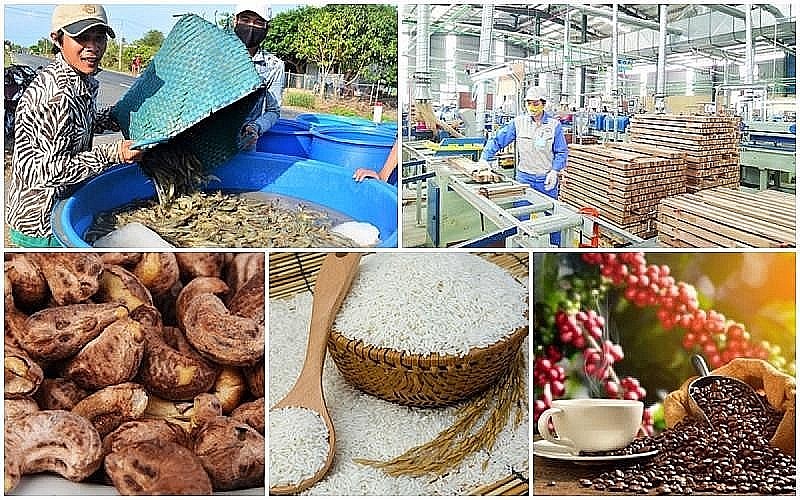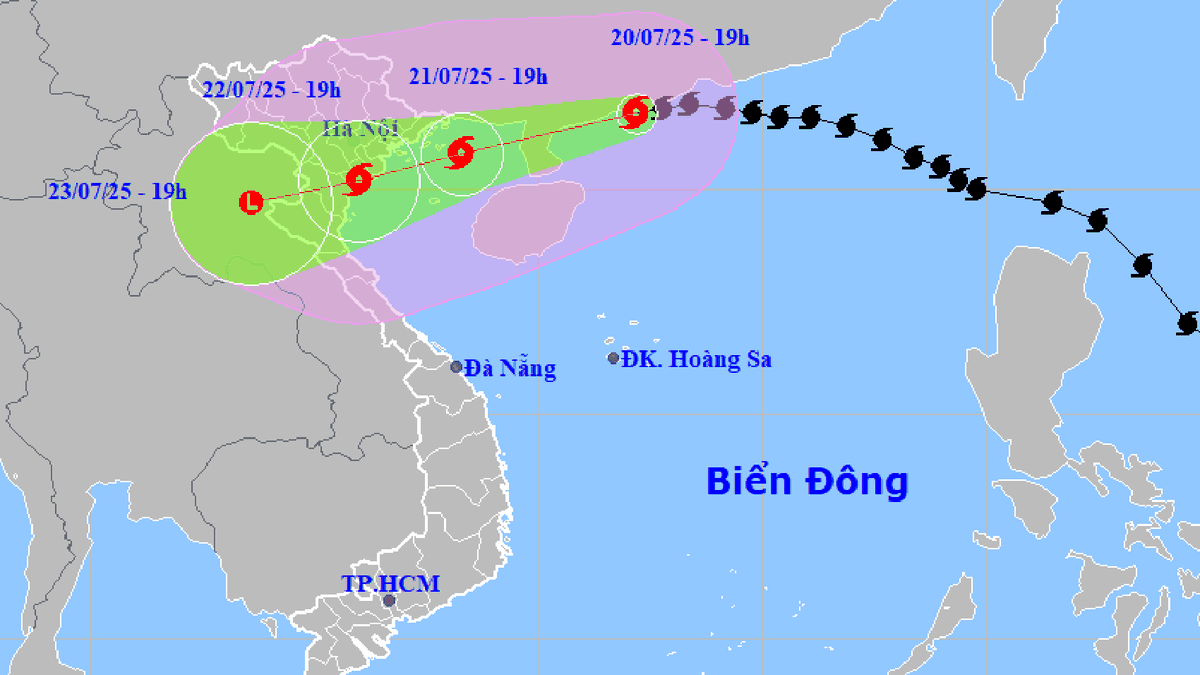| Name the 3 markets that buy the most agricultural, forestry and fishery products from Vietnam. Agricultural, forestry and fishery exports in the first 10 months of 2023 earned 43.08 billion USD. |
11 months, agricultural sector has trade surplus of 10.5 billion USD
According to the Ministry of Agriculture and Rural Development , in the first 11 months of 2023, the total import-export turnover of agricultural, forestry and fishery products reached 85.1 billion USD, of which exports were about 47.8 billion USD and imports were 37.3 billion USD. Thus, the trade balance of the agricultural sector had a surplus of more than 10.5 billion USD, an increase of 34%.
 |
| Vietnamese agricultural, forestry and fishery products are present in 180 markets. |
In terms of exports, the export turnover of agricultural, forestry and fishery products in November is estimated at 4.8 billion USD, unchanged from October and up 13% over the same period last year. In the first 11 months of 2023, the total export turnover of agricultural, forestry and fishery products is estimated at 47.8 billion USD, down 3% over the same period in 2022. With this result, the agricultural sector has achieved 89% of the target for 2023.
By the end of November, the export value of forestry products, aquatic products, and production inputs decreased sharply, only agricultural products and livestock products grew positively.
Specifically, seafood exports were estimated at 8.24 billion USD, down 18.9%; forestry exports were 13.02 billion USD, down 17%; production inputs were 1.82 billion USD, down 18.9%.
Particularly, the value of agricultural and livestock products increased, of which agricultural product exports reached 24.3 billion USD, up 17.1%.
Contributing to the growth in agricultural export value are fruits and vegetables with export turnover in the first 11 months of 2023 reaching 5.32 billion USD, up 74.5%. Next is rice with export turnover in the first 11 months of 2023 reaching 4.41 billion USD, up 36.3%. Cashew nut exports in the first 11 months of 2023 reached 3.31 billion USD, up 17.4%. Exports of cereal products reached 1.08 billion USD, up 5.4%.
For livestock products, exports in the first 11 months of 2023 reached 453 million USD, an increase of 23.5%.
Thus, in the first 11 months of 2023, there were 6 products/product groups with export value of over 3 billion USD. Specifically, wood and wood product exports reached 12.11 billion USD; fruit and vegetable exports reached 5.32 billion USD; rice exports reached 4.41 billion USD; coffee exports reached 3.54 billion USD; shrimp exports reached 3.38 billion USD; cashew nut exports reached 3.31 billion USD.
The average export price of some commodities recorded an increase in the first 11 months of 2023 as follows: rice price reached an average of 568 USD/ton, up 17.3%; tea price reached 1,750 USD/ton, up 8.7%; coffee price reached 2,570 USD/ton, up 11.9%.
On the other hand, in the first 11 months of this year, agricultural, forestry and fishery imports were estimated at 37.3 billion USD, down 10% over the same period in 2022. Of which, agricultural products decreased by 9%, livestock products decreased by 5%, aquatic products decreased by 3%, forestry products decreased by 28%... China, Brazil, and the US are the three largest markets supplying agricultural, forestry and fishery products to Vietnam with proportions of 8.1%; 8.1% and 7.9% respectively.
The Import-Export Department ( Ministry of Industry and Trade ) stated that fruits and vegetables continue to be a bright spot in the country's export of goods. This item could reach 5.8 - 6 billion USD in 2023.
Regarding rice, Deputy Minister of Agriculture and Rural Development Phung Duc Tien said that the export of this product could reach nearly 8 million tons this year.
China is the market that buys the most agricultural, forestry and fishery products from Vietnam.
Regarding the market, the Ministry of Agriculture and Rural Development said that China, the United States and Japan continue to be the three largest export markets for agricultural, forestry and fishery products of Vietnam.
Of which, the export value of agricultural, forestry and fishery products to the Chinese market in the first 11 months of 2023 accounted for 23.2% of the total turnover, up 18%; the United States accounted for 20.6%, down 17.9%; Japan accounted for 7.4%, down 9.1%.
Mr. Le Thanh Hoa - Deputy Director of the Department of Processing Quality and Market Development (Ministry of Agriculture and Rural Development) said that recently, many groups of agricultural products, rice, fruits, and coffee exported to the Chinese market have taken advantage of the opportunity to open the market and prices to boost exports, so the growth rate is the highest among the groups of products.
In addition, China has licensed 12 fruit and vegetable products, over 800 seafood processing facilities, 40 live crab and lobster packaging facilities, and 5 tiger shrimp and white-leg shrimp packaging facilities; there are 128 types of products and 48 species of Vietnamese seafood.
Experts say that there is still much room for exporting goods in general, and agricultural, forestry and fishery products in particular, to the Chinese market in the coming time. This is an opportunity for Vietnamese enterprises to approach and further promote investment and production activities, enhance integration, seek partners, and exploit the full potential of this market.
Mr. Le Thanh Hoa emphasized that, to seize this opportunity, Vietnam needs to complete the infrastructure system serving import and export activities in the direction of the State and enterprises investing together to increase the capacity to provide logistics services, preserve goods along the chain from production areas to warehouses; increase the application of science and technology, high technology, digital transformation to increase efficiency, reduce costs in the export chain of agricultural and aquatic products to China.
At the same time, improve the capacity of enterprises towards increasing professionalism and formality, carrying out import and export activities in accordance with international practices and regulations of importing countries.
Source link

























![[Photo] National Assembly Chairman Tran Thanh Man visits Vietnamese Heroic Mother Ta Thi Tran](https://vphoto.vietnam.vn/thumb/1200x675/vietnam/resource/IMAGE/2025/7/20/765c0bd057dd44ad83ab89fe0255b783)








































































Comment (0)